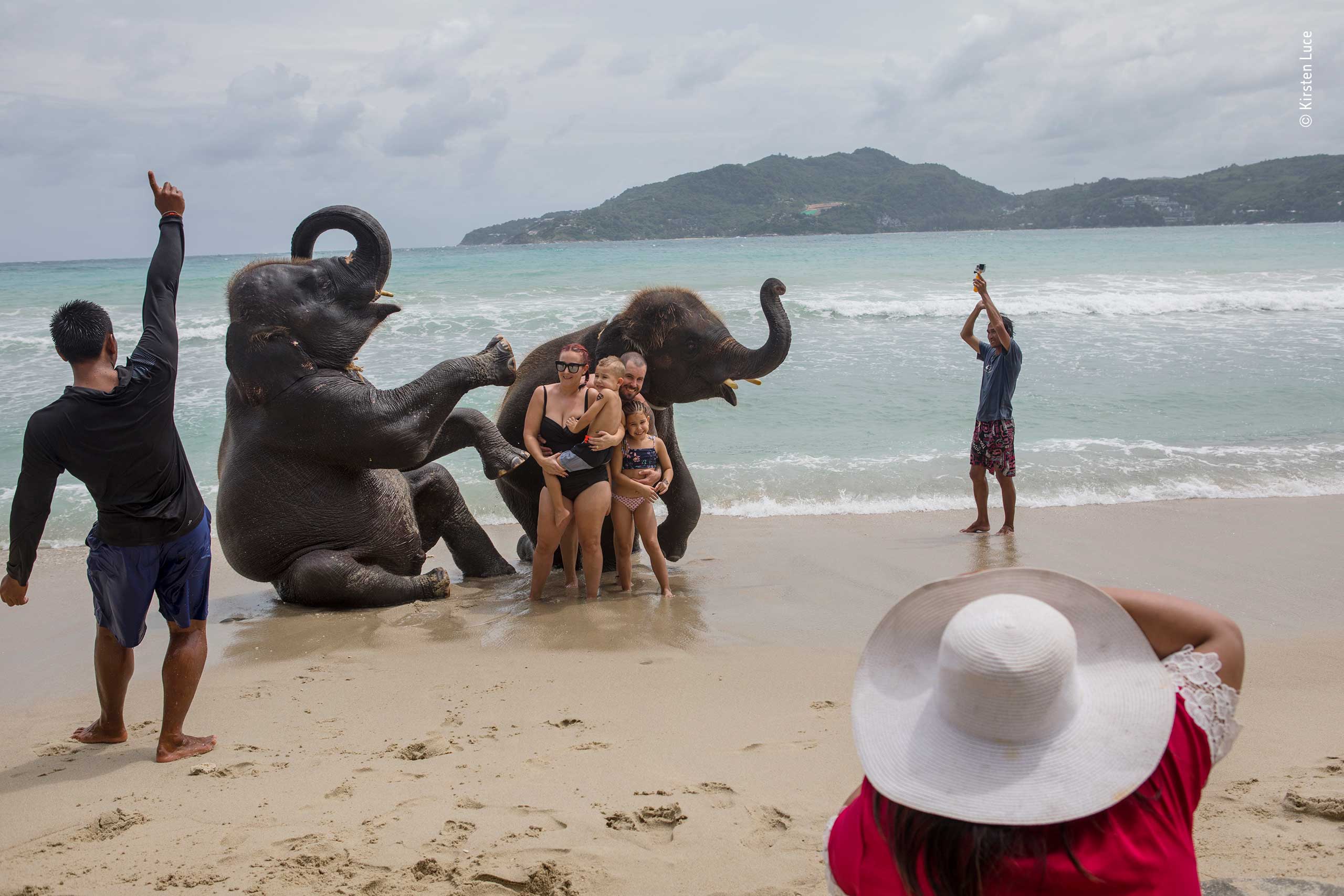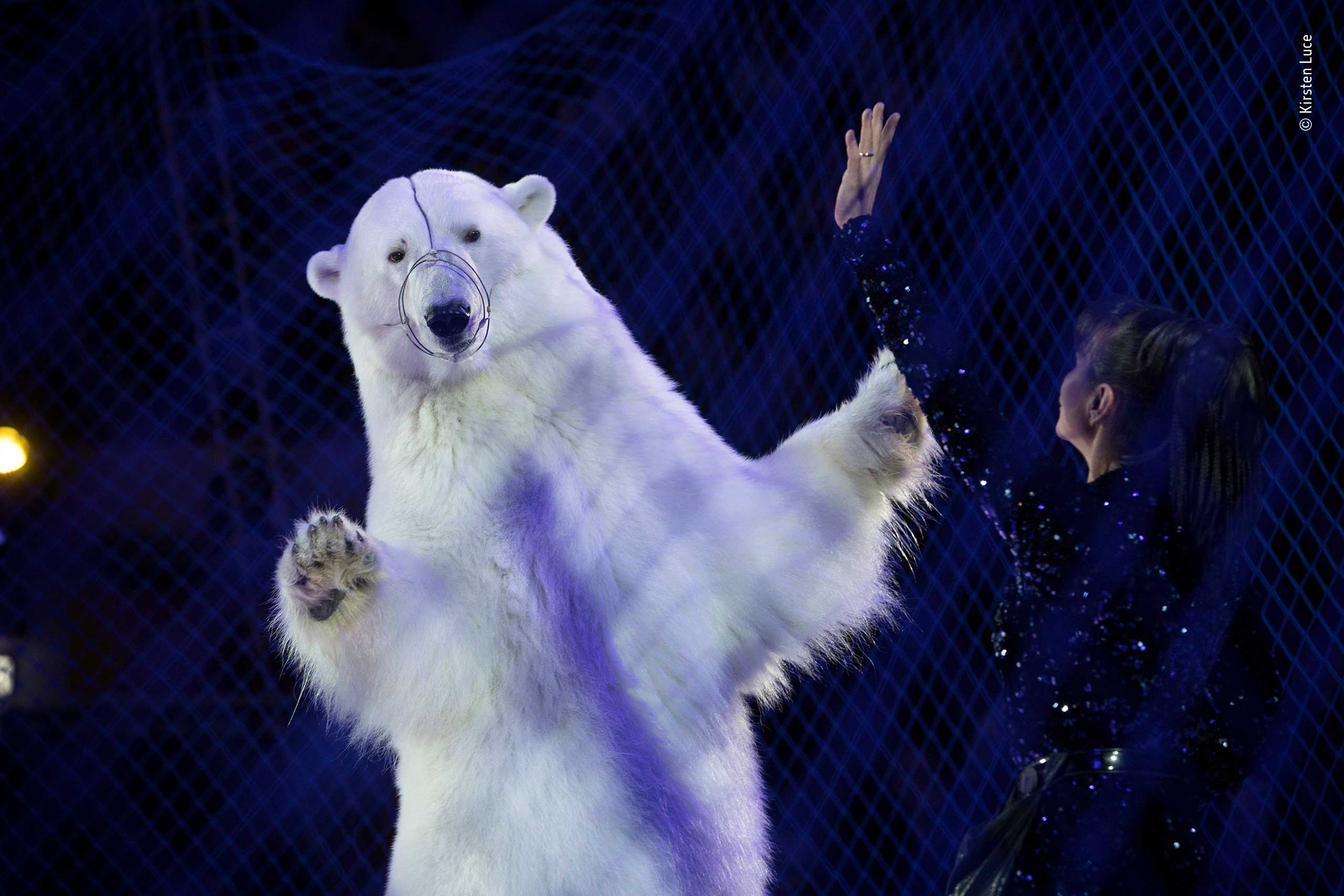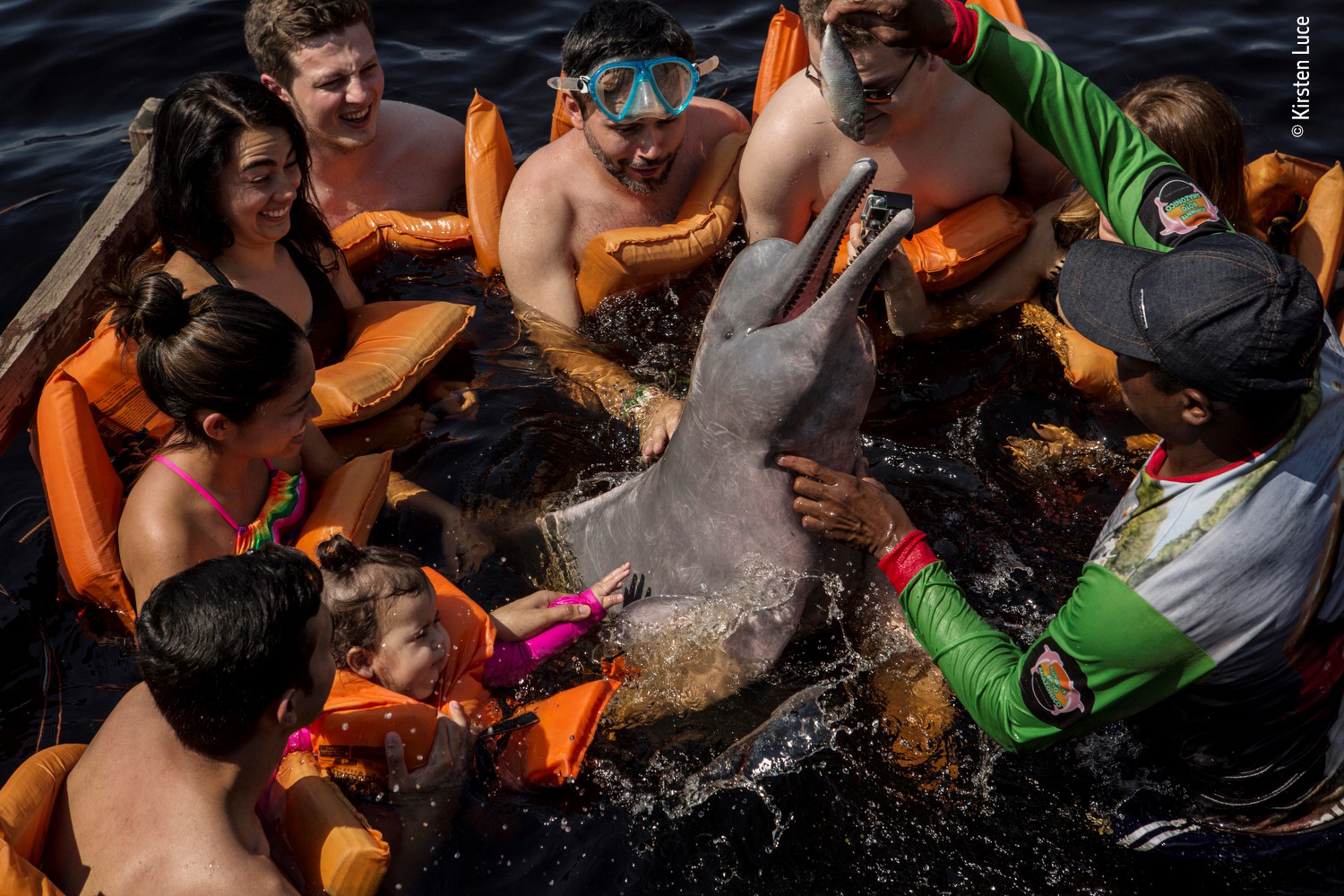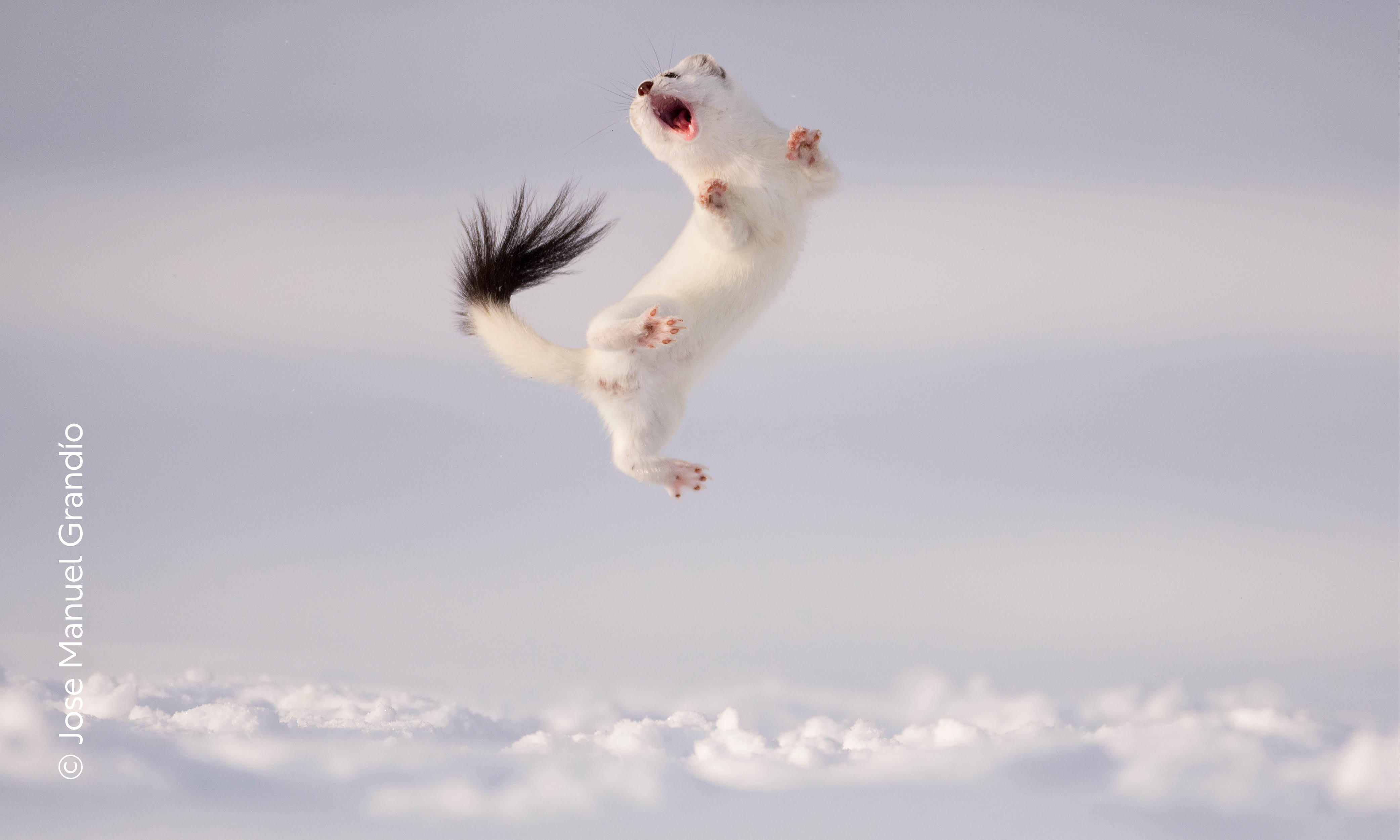Wildlife Photographer of the Year: separating entertainment from exploitation
By Alison Groom & Kate Rowland
New York City-based photographer Kirsten Luce was the winner of this year's wildlife photojournalism category. Her photos highlight the plight of animals kept in captivity for tourist entertainment.
In what began as an assignment for National Geographic, Kirsten travelled from the Amazon to Thailand and eventually Russia, documenting the animals that are captured and exploited for the tourism industry. Kirsten's work focussed on sloths and caimans in the Amazon, elephants and tigers in Thailand, and bear and whale shows throughout Russia.
Beginning with the concept of 'selfie tourism' in the Amazon, Kirsten noted how 'often it appears innocent enough, as if they are pets, but what we were finding is that the animals are actually living in really deplorable conditions whenever the tourists would disappear, with no vet care and no thought to their nutrition or welfare'.
As Kirsten travelled further, it became clear that the industry of 'selfie tourism' was just the tip of the iceberg. Across the world, wild animals are being held captive and forced to perform for and pose with tourists who are willing to pay for the experience.
Often the species involved in this industry are already threatened with extinction. Their novelty to foreign visitors increases their value to local people who might be able to make a living through this lucrative business.
In Thailand, young elephants are trained to perform for visitors, such as painting or sports, while the older elephants give rides through the rainforest or across beaches. These working elephants endure a lifetime of labour without rest. When they finish working, the animals are often tightly chained or caged to keep them from escaping.
A similar fate can be expected for the beluga whales which feature in another of Kirsten's images. The whales performed in a small inflatable pool as part of a travelling circus in Russia, repeating the same act over and over throughout the day. When the show packs up, they are put into tanks and hoisted onto a truck to be transported to the next town.
The detrimental effect that a life in captivity would have on these highly social animals was not lost on Kirsten. She adds, 'In general, most people who we encountered in Russia took no issue with transporting these animals in trucks and keeping them confined to small tanks.'
Polar bear despair
For Kirsten, the rumours of a polar bear circus in Russia were particularly difficult to stomach. She explains, 'In our research before we went, I had found these images of a polar bear circus, which really shocked me. It's the only one that we know in existence. So when I was there I asked my researcher and interpreter to help me find it.'
Upon arrival in Russia, however, it looked like the circus had closed down. Kirsten says, 'We found several news stories that the bears had actually been retired, that the images had really created a backlash, and people were upset about them.
'I thought that the polar bear circus had ended.' She goes on, 'However, when I went to St Petersburg, we were interviewing a bear trainer there that worked with brown bears. He casually mentioned that there was a polar bear circus that had come through town a few weeks ago. I made a note of it, and as soon as the interview was over, I grabbed my interpreter and I had him help me track them down.
'This polar bear act in particular was probably the most shocking scene of animal exploitation that I've witnessed in all the six countries that we visited, because polar bears are an iconic symbol of conservation, so to see them exploited in this way was really alarming.'
A difficult role to play
Kirsten didn't reveal herself as a photojournalist until after the show, she explains, 'Our method of reporting was to experience and document these wildlife encounters the same way that a tourist would. I didn't want any special treatment because I was on assignment for National Geographic. I also didn't want the operators to change anything in advance so that we weren't seeing what really happened during these encounters.'
This presented some problems when it came to taking a winning photograph: 'Normally, of course, I would want to move around and capture the scene from different angles, but because I was going as a tourist and witnessing this as a tourist might, I was stuck sitting in my seat for the entire show.'
After the show, Kirsten revealed who she was and took the time to sit down with the operators for a formal interview. 'This gave the owners and operators an opportunity to have their perspective included in the written story,' she says.
Kirsten recognises the role tourists play in encouraging this industry. She says, 'I approached this story as a journalist. It was important to me not to demonise the handlers or owners of these animals, and to recognise that tourism is driving this.'
Kirsten hopes that her images encourage tourists to think twice about the experiences and encounters that they look for when abroad. Images featured in the Wildlife Photographer of the Year competition have helped to bring about awareness of animal exploitation, and have even led to changes in legislation.
Kirsten says, 'The tourism industry is extremely entrepreneurial, so if you show up in a country wanting to have an encounter with a wild animal, you must do research and find an ethical way to interact with that animal. It falls on you to do this research.
'I think photojournalism can play a really important role in the conservation and protection of animals. In this particular case with wildlife tourism, you see a lot of people who truly love animals and want to get close to them, but have misguided ideas about what that actually means, and the training that goes in to making that moment happen for them.'
A shrinking industry
Asides from encouraging conversation around animal abuse, Kirsten hopes her images help more women to pursue a career in wildlife photography. Thinking about her role as a woman in a male-dominated field, she says, 'many people automatically think of certain traits that the job requires: namely toughness, grit and stoicism, and these traits are often associated first with men.
'My theory is that these associations lead to more men being commissioned and supported in this work. But as photography becomes more accessible and photographers can more easily have their work seen, it's obvious that women are just as capable at this kind of work.
'It's also worth noting that empathy and patience - traits often assigned first to women - are equally crucial to these jobs. Thankfully, these preconceived notions about gender are dissipating in most parts of the world.'
When asked how she would advise emerging photographers and photojournalists, she says, 'I might first warn young people that the industry is shrinking and that it is getting harder to make a sustainable living in this field.
'With that said, follow and explore what fascinates you personally. Don't go and photograph what you think other people would want or expect to see from you, follow what you’re genuinely curious about. That will help motivate you to follow through with your ideas despite the challenges that will inevitably arise.'






Don't miss a thing
Receive email updates about our news, science, exhibitions, events, products, services and fundraising activities. We may occasionally include third-party content from our corporate partners and other museums. We will not share your personal details with these third parties. You must be over the age of 13. Privacy notice.
Follow us on social media